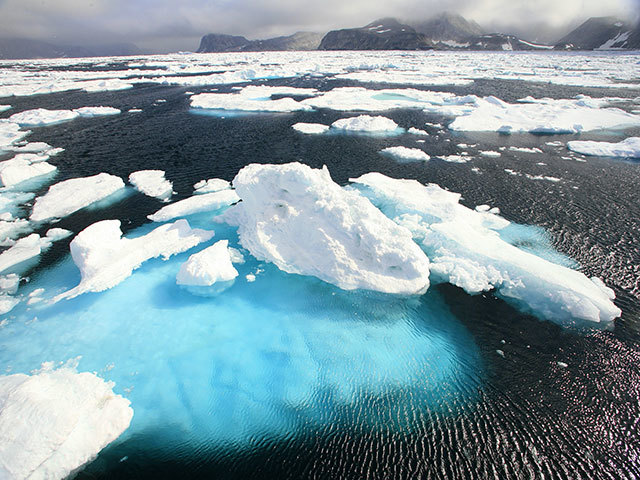
Royal Dutch Shell Plc won US approval to resume oil exploration off Alaska’s Arctic coast after regulators imposed safety conditions meant to avoid the mishaps that plagued the company three years ago. Environmental groups decried the decision.
The Interior Department on Monday endorsed Shell’s plan to have two rigs drill up to six exploratory wells in the Chukchi Sea, if it gets other permits needed, sets plans to control any leaks and keeps its ships at least 4 miles away from any walruses.
Shell wants to resume work halted in 2012 when its main drilling rig ran aground and was lost. It also was fined for air pollution violations.
“As we move forward, any offshore exploratory activities will continue to be subject to rigorous safety standards,” Abigail Ross Hopper, the director of the Bureau of Ocean Energy Management, said in a statement.
Oil exploration and production companies in the past decade stepped up plans to drill in the Arctic, using technology that may let them reach vast reserves trapped in the sea floor beneath ice. The Arctic seas contain an estimated 24 billion barrels of oil, according to the US Geological Survey.
Shell, which discovered oil in the same part of the ocean in 1986, is the first major explorer to return to the region since the last offshore Arctic drilling boom fizzled almost 30 years ago amid slumping crude prices.
Exxon Mobil Corp., BP Plc and other producers have discovered more than 10 billion barrels of oil in North American Arctic seas since the early 1970s. Those resources remain locked beneath the sea floor because of a lack of pipeline capacity to haul them to markets.
Ross Hopper said that other companies probably will “wait and see how Shell prevails” in the region. The U.S. approval is “an important step forward for Shell,” she said in the interview.
Environmental groups, citing harsh conditions and a fragile ecosystem, say it’s a mistake to drill in the Arctic.
“We can’t trust Shell with America’s Arctic. As we all remember, Shell’s mishaps in 2012 culminated with its drilling rig running aground,” Cindy Shogan, executive director of Alaska Wilderness League, said in a statement. “Shell’s 2015 plans are even riskier and dirtier this time around.”
Franz Matzner, director of the Beyond Oil Initiative at the Natural Resources Defense Council, called it a “wrong-headed decision.”
“No company deserves a license to despoil our last pristine ocean and spew massive amounts of carbon pollution into our atmosphere,” Matzner said in an e-mail. “Any major Arctic Ocean spill would be impossible to clean up.”
Shell drilled two test wells in 2012 after spending about $6 billion over almost a decade in preparation. This year Shell plans to simultaneously use two vessels to explore about 70 miles from the village of Wainwright.
The drilling will take place in 140 feet of water.
In its review, the Interior Department found that drilling at the site would have no significant environmental impact.
In approving Shell’s plan, the government listed 18 conditions, including a requirement that the company get other needed permits and that it comply with endangered species protections.
“The approval of our revised Chukchi Sea Exploration Plan is an important milestone and signals the confidence regulators have in our plan,” Curtis Smith, a spokesman for Shell, said in an e-mail.
“However, before operations can begin this summer, it’s imperative that the remainder of our permits be practical, and delivered in a timely manner.”
Recommended for you
